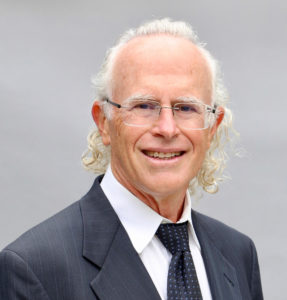2017 Leader of Tomorrow: Ana Cabrera, RN, MSc
Ana Cabrera knows that people from different cultures, religions, socioeconomic groups and sexual orientations all express grief a little differently, but no one is immune to it. As director of nursing at Careplus Hospice in Carrollton, Texas, she’s made it her mission to make sure every patient feels welcome, accepted and respected. “Grief is multi-cultural. There are no divisions when it comes to people. We are all human,” she says. “I don’t see any barriers or divisions when it comes to people, and I try to teach my staff that as well.”
This attitude has led her to make a tremendous difference in how Careplus Hospice provides care in the community. She personally reaches out to the local Hispanic community, the lesbian, gay, bisexual, transgender, queer (LGBTQ) community, families of all faiths and those of no faith at all. Her passion has become the mantra for the entire agency, her colleagues say—to make a difference in the community and to change the future of hospice care into one that follows the model of inclusivity.
Cabrera, 43, says encouraging the staff to put themselves in the patient’s shoes is the most important advice she can give them. “We cannot be 100 percent empathetic to our clients’ pain because everyone is different, but we can ask ourselves what we would want if it was our loved one who was dying,” she says. “Treat them as if they were your family.”
Building bridges
She brings her experiences as a child of two worlds to her work. She was born in Cuba, but her family immigrated to the Miami area when she was 5 years old. Being bilingual and having an understanding of her own cultural differences offered her early insights into building bridges across diverse groups.
For example, her personal experience with the Hispanic culture has guided her approach to pain management. Many Hispanic people will not express pain verbally, so their caregivers have to be alert to other signs they are in need of help and be proactive about reaching out. “A lot of Hispanics are very timid when it comes to expressing their needs, because even if they have lived here for many years, the United States is still their second country,” she says.
Once Hispanic patients are reassured that their caregivers are there to help, they will often open up. One way to encourage engagement is to offer them choices in each question asked, she says. “If you were to say ‘What would you like for lunch?’ for example, they would not answer you. But if you say, ‘I have chicken, beef and fish. Which would you like?’ then they know it is okay to express their choice,” she says. “You have to make the environment comfortable for them to open up.”
For the LGBTQ community, she believes that showing respect and acceptance of their life stories is crucial to getting them to let the hospice team care for them. Caregivers may encounter a range of resident emotions, since many LGBTQ residents spent their lives being rejected, criticized, or worse. One way to show respect is to communicate using the appropriate terms that relate to their relationships, she says. If a person introduces his or her same-gender spouse, for example, it is crucial the staff then refer to that person as “husband” or “wife,” not as a "friend.”
“We show them respect for who they are,” she says. “It is not my job to judge or to stereotype them. My job is to come in and provide service to the best of my abilities.”
Another demographic that has a special place in her heart is the veteran population. Older veterans and career military service members often struggle to accept care and may have trouble expressing themselves. If the resident happens to have a diagnosis of post-traumatic stress disorder, the caregiver-resident equation can get even more complicated. “Veterans were trained to protect us, and it’s so hard for them to let go and say, ‘Okay, it’s my turn now. I know you are here to take care of me’,” she said. “We need to help them let that guard down so we can treat them.”
Bridging gaps across generations
Much of her advice applies to all elderly patients, she says, many of whom are disrespected simply because of their advanced age. Some may feel they can’t relate to healthcare workers who are decades younger than they are.
One way she breaks through that generational gap is by asking patients how they met their spouse. Listening to their memories serves as a great ice-breaker, she says, and allows her to have more in-depth conversations and be welcomed into a home that has likely been grieving since long before the hospice team arrived. “People believe that we grieve the moment that somebody dies, but really, we begin to grieve the moment we are given bad news,” she says. “When you come in, you have to be very humble. If you cannot sit on the floor and be one on one with them, this wouldn’t be the job for you.”
And, if clients offer you food, always accept it, she advises. “Some people show gratitude by trying to feed you. If you turn it down, you are not accepting their gratitude, making it harder for them to accept your care,” she says.
Looking ahead, Cabrera and her husband dream of opening a not-for-profit organization to help hospice patients complete unfinished wishes on their “bucket list.” She also wants to develop a large volunteer group to spend time with hospice patients.
Related Articles
Topics: Articles , Clinical











